21st Century Way to Zen
MAGNESPHERE from SaunaBar
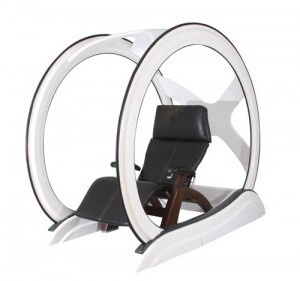
Yoga and meditation may help you bliss out, but the latest trend emerging from Los Angeles is the Magnesphere exclusively at SaunaBar. Featuring magnetic resonance therapy- this cutting edge piece of machinery utilizes electromagnetic fields to enhance feelings of relaxation. It’s the ultimate way to Zen out, meditate and rejuvenate the mind, body and spirit.
How it works:
Relax in a comfortable chair inside the Magnesphere activating every nucleus of every cell in your body. Coupled copper coils create a magnetic field which harmonizes with your body. Enter a new spirit gravity as you sit back and relax in a transcending experience, which realigns each of your body’s natural energy centers. Patients remain awake for the 30-60 minute sessions, but have been known to drift off into slumber because the anti-gravity chair they're laying in is so relaxing.
Holistic Healing Benefits include:
• Transcendental healing experience
• Realign out of balance energies
• Awaken spiritually as you relax physically and mentally
• Put the spring back in your step after only a couple sessions
• Allow your body to activate its own natural healing processes via magnetic resonance
• Improve balance- coupled copper coils create an elevating magnetic field
• Target pain- each 30-60 minute sessions specifically target pain, stiffness and stress
• Reduce Stress- allow yourself to enter a state of deep meditation as the Magnesphere’s electromagnetic polarity permeates each molecule of your body.
• Better sleep- synergized magnetic resonance treats insomnia and restores natural biorhythms
• Aid focus- sharpen your attention by restoring your body’s natural balance mechanisms
Three to six initial sessions are recommended in the first two weeks, with a follow up regiment developed and tailored to the unique response exhibited by patients.
For more information please visit www.saunabar.com or contact Kip Morrison & Associates.
14 Weeks Out - Not Every Day Is Perfect

As you guys know I am in Prep for OPA provincials. I compete in figure competitions. My photos show a strong physique but it takes a lot to get there both mentally and physically.
Lately I have been feeling more stressed than ever with life things. I have a lot on my mind. So I wanted to sit down and write to all my competitor friends, fans and any one else who is interested about how everyday is not perfect. Especially on prep.
On prep you often times have good days and bad days (I mean really bad days). Days where you're tired, hungry, upset, stressed or maybe all of those at once. And then if you are a woman and its that time of the month things seem 1000x worse.
You can't let those bad days throw you off track. You can't let those bad days, slip ups, mistakes or things that are out of your control dictate the rest of your day, week, month or prep. You have to be better than them. You need to learn to move on, move past them and make the rest of whatever is left worth it. Give it your all. Your 110%.
Every prep is a learning experience. A chance to gain knowledge, learn, grow and figure out what works well for you. And if you are lucky you will have a support system. That one person, group of people or even your coach that will listen, understand and support. You need to have at least one person on your side, rooting for you, in your corner and who can empathize what you are going through. Let it out, vent, cry but do not keep those emotions inside. Thats when more stress and problems occur. This will lead to elevated cortisol, hinder your progress and ultimately hinder your prep.
Let go of the people or person who holds you back. The ones who aren't on your side or in your corner rooting for you. Prep is a time to be selfish, put yourself first and do whatever it takes to get you to your goal. Its ok to go through emotions. There is nothing wrong with you. It's a normal part of prep when you are pushing your body to the limit. You are not alone. I have been there and so have many other competitors.
You got this!
Super Slim: New Book Exposes Fool-Proof Blueprint to Losing Weight – Without Dieting or Exercise!

Keith Foster’s ‘SUPER SLIM: The Intelligent Person's Guide to a Slimmer, Healthier & Longer Life’ unravels weight gain, obesity and weight loss in a simple, highly-actionable way that has never been seen before. Taking readers right back to humanity’s beginnings, Foster explains fat’s evolutionary benefits, advancing to the present day’s obesity epidemic and how to fight it without fail. From sunlight’s “secret” benefits to weight loss, all the way to providing high-alkaline food lists, this bold new volume has the power to change the lives of millions.
The prevalence of obesity today makes it abundantly clear that most people, through lack of information, are prone to mismanaging their bodies. According to lecturer and researcher Keith Foster, those who want to maintain a healthy weight and all of the benefits it brings must first understand what helps and hinders the body’s functions.
Based off a lifetime’s research, Foster’s ‘SUPER SLIM: The Intelligent Person's Guide to a Slimmer, Healthier & Longer Life’ explains why the body’s acidic and alkaline balances are not only important, but hold the key to beating obesity and living a long, vibrant life.
Synopsis:
Super Slim is intended as a reference work for everyone who wishes to lose weight, be more healthy and live longer!
It covers a broad range of topics in some depth, all of which have a direct bearing on weight gain, obesity and ill health. By describing the mechanism by which fatty deposits are distributed around the body, Super Slim enables people to clearly understand how to reverse this process.
Super Slim tracks human development from its early beginnings to show why we developed a layer of blubber, what evolutionary purpose this served and how it can be reduced.
It then goes on to describe the bloodstream’s priority, which is to maintain a degree of alkalinity in order to provide adequate levels of oxygen to the cells, (a process which, with the modern sugar-rich diet, necessitates a shunting of acidic toxins (fats) into “storage areas” around the body). These are where fat accumulates, well away from the main circulatory system.
Super Slim goes on to deal with food, providing lists and recommendations as to how you can alkalise your diet. It then touches on a new form of exercise (ideal for the busy person) and a new fertility regime using which it is possible to choose the sex of your children.
Further information is provided on male fertility, plus how to avoid fibrocystic breast disease and how to get rid of stretch marks.
Further yet, on how sunlight helps you to slim, lack of sleep can make you fat and a whole compendium of knowledge on similar vital subjects. These help the reader to be in control of their weight and to become slimmer, more healthy and longer lived.
Super Slim is not a scientific treatise, but simply a very informative book that will help a lot of people to lose weight healthily and keep it off.
“Yoyo dieting is a huge killer, and a vicious circle that over 80% of people encounter,” explains Foster. “Lifelong weight loss is not about a quick-fix dietary change, but about understanding the body’s functions, how it reacts to alkaline foods and how everything comes together to ensure a person can reach their natural healthy weight and remain there for the rest of their life.”
Continuing, “It’s all about giving people the information they so desperately seek, and then empowering them to make actionable, tangible change. According to reviews, it’s working wonders already for people around the world.”
Reviews have been overwhelmingly positive. For example, Julie comments, “This well-referenced work is not a traditional ‘diet’ book with recipes and calorie counting, instead it is an invaluable resource to aid understanding of why it is important to be within a normal weight range and to learn key approaches that can be taken to achieve this.”
Another reader adds, “I got this book because no matter what approach I seemed to take in dieting, nothing seemed to be permanent, and despite some breakthroughs, I was struggling to maintain my weight-loss and would yoyo back and forth between an ideal and a far from ideal weight. Keith's book has helped me to understand the underlying causes of my yoyo weight gain, and the processes the body uses to adapt to a toxic system which then keeps me 'insulated'. With a greater understanding I know feel I am empowered to finally, once and for all, drop those extra pounds for good.”
‘SUPER SLIM: The Intelligent Person's Guide to a Slimmer, Healthier & Longer Life’, from SAGAX Publishing, is available now: http://amzn.to/2kHijcD.
About the Author:
Keith Foster is a researcher, writer and lecturer. He has spent most of his life focusing on unlocking the structure and technology of the ancient worldwide civilization, and also its healing technologies. The past 30 years have seen Keith involved in studying how our current civilization informs its belief systems, with particular emphasis on its current religion – science.
A natural philosopher, Keith's studies have included a wide range of cultures. His latest book The Answer to Cancer – An Electron Deficit Condition, coupled with the follow-up seminars, represents a synergism of these studies.
At 75 years of age and as the father of 7 children, Keith is a fine and vigorous example of how well his understanding of the human condition translates into healthy longevity.
A charismatic speaker whose gift is to make complex subjects simple and easy to understand, Keith’s wisdom, sense of humour and integrity are infectious.
Keith hosts lectures and speaks at seminars all over the world.
YoFiit - Nutritional Bars
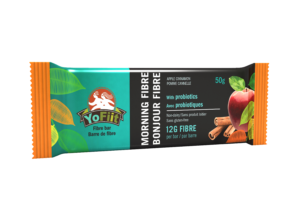
I was recently sent some of YoFitt's nutritional bars to try. I loved the packaging. Bright coloured and very informative about what ingredients are in the bar. I also love that they are made locally here in Toronto. I love supporting Canadian companies and even more so when they are made in my city.
What's so great about YoFiit?
The bars contain pre-biotics to help support a healthy gut flora because a healthy gut is the foundation of a healthy life. 11-12 g of fibre per bar. It also has probiotics that serve 2 functions a) sustain a strong gut by aiding at the digestion of carb and protein b) enhance one’s workout experience because in clinical trials, combining this probiotics strain with protein enables the easier protein absorption and as such reduces soreness post workout and allows for quicker muscle. The bars have no more than 5g of sugar. They are nut-free, vegan and gluten-free. They also have high in trace minerals such as magnesium, manganese.
What's really unique is that there are 3 bars scientifically formulated based on your needs throughout the day:
1.Morning fibre bar provides 49% of your fibre needs for the day. You are halfway through with just one bar!

2. Midday Energy bar is the pick-me-up kind of bar when you feel like you are crashing in the office or on the road around 3 pm. Full with antioxidant such as goji, cacao, quinoa, this is the perfect bar for on the go adventures.
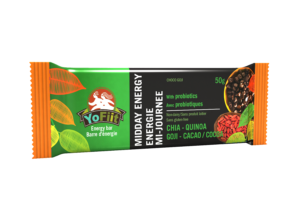
3. All day protein bar is the ultimate protein companion bar. Optimal ratio of protein, fibre and sugar. 15g of protein / 12g of fibre / 5 g of sugar per 55g bar.
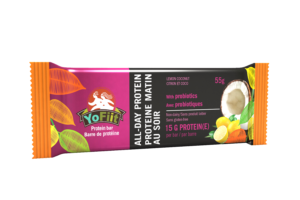
If you are looking for a natural bar these are a great source. I especially like that the 3 bars are specific to the different needs at different times of the day. They taste very clean and healthy. Give them a try and let me know if you like them.
Thanks Yofiit for the bars!
You can purchase bars HERE.
Armadillo LT Gaiter from Hillsound Equipment

The Hillsound Armadillo LT™ gaiter was created to meet the need for high-performance, affordable gaiters for outdoor enthusiasts. The Armadillo LT™ is comprised of a waterproof and breathable upper made of Flexia three-layer fabric that is contour fitting and lightweight. This stretch fabric ensures a snug fit that won`t pinch or fall down. The lower is a 1000 denier, high-density nylon, providing supreme protection from the elements. These gaiters will keep mud, trail debris and snow out of your socks and hiking boots. Like all Hillsound gaiters, the Armadillo LT™ features a YKK waterproof zipper to make it easy to get the gaiter on and off. The Armadillo LT™ is a solid choice for year-round hiking and snowshoeing.
- Waterproof to 20,000mm.
- Breathability rating: 6RET, 15.000 + g.
- YKK zipper brings the gaiter close to the leg.
- DWR coating will remain intact for up to 50 washes.
At the beginning of winter I was lucky enough to get sent a pair. At first I was a little skeptical. However, even though our winter was short these little guys came in handy. It was more of a slushy winter than a snowy one here in Toronto. So I was very grateful for the waterproof aspect of these gaiter's. I found them very easy to put on over my shoes and it was stretchy which gave it a really snug fit.
Im a size 9 and the medium fit me perfectly. The best thing about them is that I could use them with most of my shoes (and I have a lot). I like that they are black and went with my wardrobe as well. I always used them to walk my dog and my feet stayed dry and comfortable.
Overall I give the http://hillsound.com/hillsound-product/armadillo-lt-gaiter/ a 9/10. I wish that they were insulated. Non the less I would highly recommend these for anyone who is an outdoor enthusiast in cold weather climates and for people who hike.
Purchase yours HERE!
LIVE ULTIMATE LAUNCHES THE ULTIMATE ELIXIR
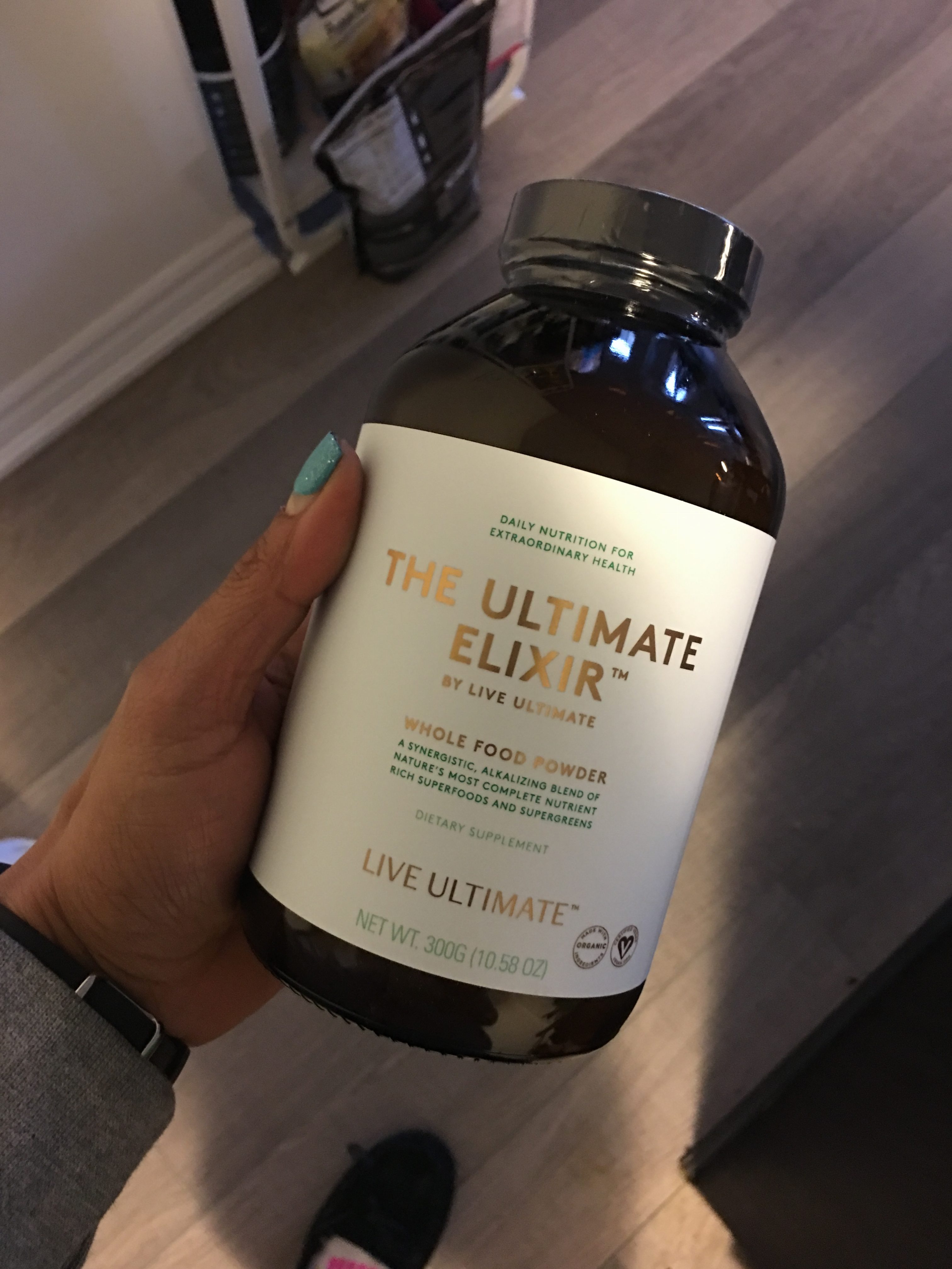
This powerful whole food supplement features an alkalizing blend of more than two dozen of nature’s most nutrient-rich superfoods, optimizing the healthiest ingredients on earth!
Live ultimate sent me their new product The Ultimate Elixir™ . This is a powerful, alkalizing, powdered blend of more than two dozen of nature’s most nutrient rich superfoods and supergreens, providing a full spectrum of perfect nutrition to help maintain and restore the body’s optimal pH balance and vitality. Synergistically formulated to ensure maximum bioavailability, this deeply nourishing formula has been designed for daily use, as part of a lifelong commitment towards extraordinary health.
All ingredients are produced in a GMP-certified U.S facility with rigorous testing to ensure a non-GMO status. The formula is completely free of pesticides and irradiation, while dried at the lowest possible temperature, as opposed to freeze-drying, to preserve the integrity of the nutrients and enzymes. The Ultimate Elixir is vegan certified, 100% raw and made with organic ingredients. The powdered composition guarantees the full nutritional profile of each ingredient, resulting in a naturally clean flavor with a pleasant taste.
The Ultimate Elixir contains 25 nutrient-rich superfoods and supergreens that fall under the following nutrition based categories.
Alkalizing Greens
Supergreens are powerful life-force foods and are a rich source of vitamins and minerals, including A, C, E, K and B-complex iron, calcium, magnesium and selenium. They also contain chlorophyll, amino acids, bioflavanoids and phenolic compounds to assist in detoxification. The Ultimate Elixir contains organic wheat-grass, organic barley grass, organic kelp, spirulina, chlorella, organic alfalfa and Klamath Lake Blue Green Algae.
Immune Strengthening Mushrooms
Beta glucans in Reishi mushrooms have demonstrated immune strengthening properties. Many athletes use Cordyceps found in mushrooms for increased endurance, performance and recovery. The Ultimate Elixir contains organic cordyceps, organic reishi, organic shitake and organic maitake.
Adaptogenic and Tonifying Herbs
These nutrient-rich herbs support and maintain a health hormonal balance, provide essential fatty acids, increase cardiovascular health and stimulate overall vitality. The Ultimate Elixir contains organic maca, organic tumeric, organic ginger, chia, mesquite and organic black pepper.
Phytonutrients and Superfruit Antioxidants
Superfruits provide exceptional health benefits and are loaded with vitamins, flavanoids, phyto-nutrients and dark colored pigments that protect from the effects of pollution, oxidation and support healthy aging. The Ultimate Elixir contains organic lucuma, beet, camu camu, acai, organic goji and acerola cherry.
Now thats a lot of nutrition packed into a little bottle. I was encourage taking our “30-day Challenge” by committing to take the Elixir each day for an entire month. Since I am on prep I don't drink my greens with juice etc but what I do is mix it with minimal water. I hate drinking a big glass of greens personally for some reason and the elixir mixes well with minimal water. I then have it in the mornings with my breakfast and evenings with my last meal.
I love the taste of it because I don't like greens that taste too fruity or green and I find that the elixir isn't too potent and quite enjoyable. I think that the elixir is a great source to go to for green supplementation. I always prescribe a greens drink to all of my clients and this will definitely be my go to from here on out.
For a greens product I would give this powerful elixir 10/10. Its not too green tasting, not to sweet and full of tons of benefits and antioxidants.
Thanks again Live Ultimate for sending me The Ultimate Elixir! It's my favourite greens drink to date!
You can save 15% on every reoccurring order by purchasing through the Live Ultimate website at www.liveultimate.com

Hey Everyone!
Have you been searching for an Organic Energy Drink? I was recently sent a brand to try. My friends over at Pilots Friend sent me a case of their product. A clean organic energy tonic. Crafted in Italy by Doctors for Pilots. A blend of 14 natural & organic botanical extracts and fruit juices. The blend is made from 100% natural ingredients.
A lot of people give me slack for drinking energy drinks because of the chemicals in them. Well here is your alternative. None of our ingredients have been genetically modified and no animal by-products have been used. There are natural herbs and plant extracts in it that are organically grown. There is also a varied, finely balanced assortment of caffeine derived from cola nuts and Guarana seeds.
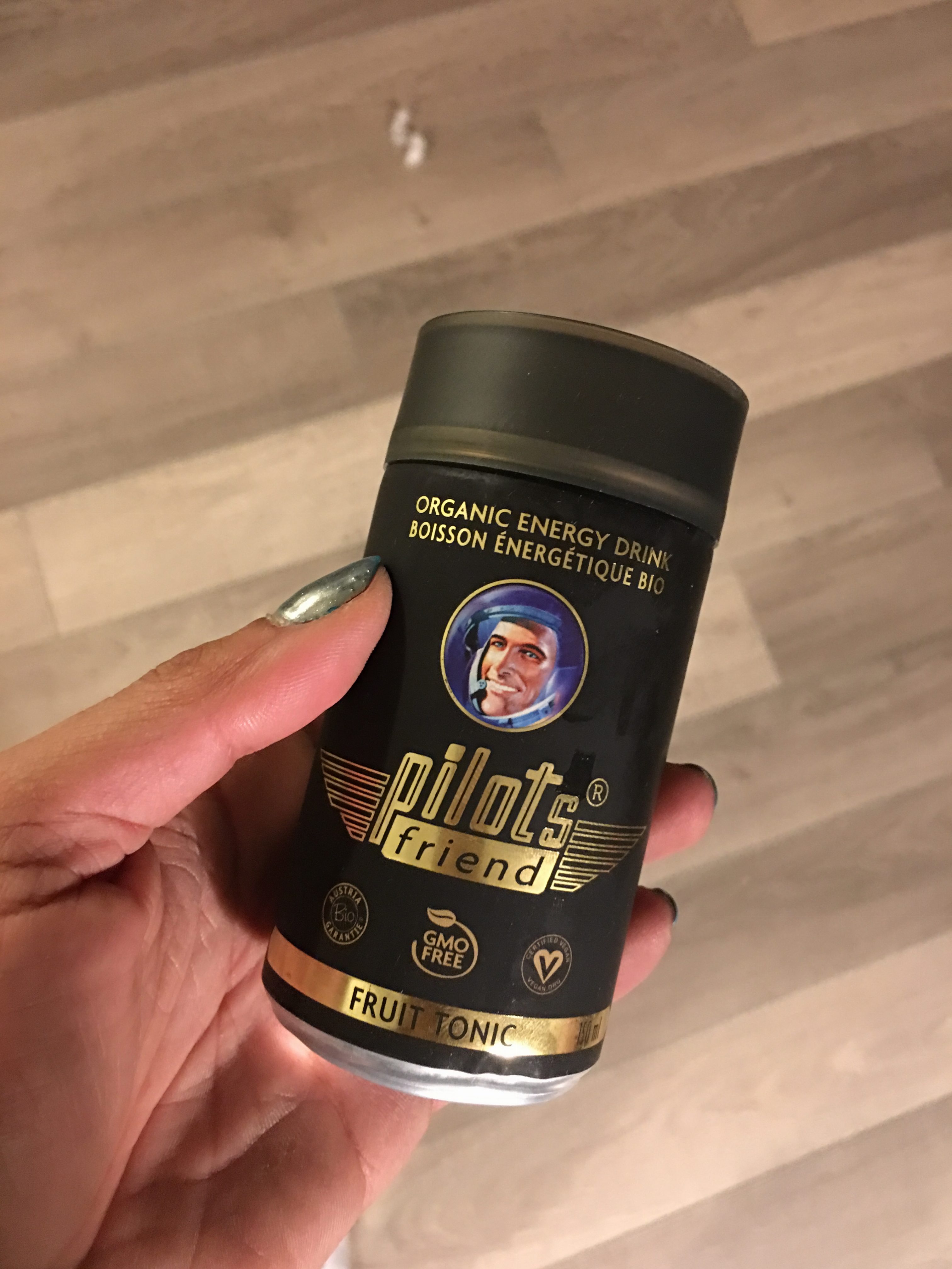
The Ingredients have:
- No Artificial Sweeteners
- No Taurine
- No Artificial Flavours
- No Preservative
Since I am on prep and can't taste test it I had Sean do it for me. He said that it tastes natural, fruity and clean. The down side is that the containers for each drink are small but the upside is that they come with a lid. You know how most energy drinks you can't reseal. This had a cool cap that goes on the top so that you can save it for later or reduce spilling if you are walking around or traveling with it in hand or a cup holder!
Thanks so much Pilots Friend for sending me a sample box.
Let me know if you guys try the product and if you liked it!
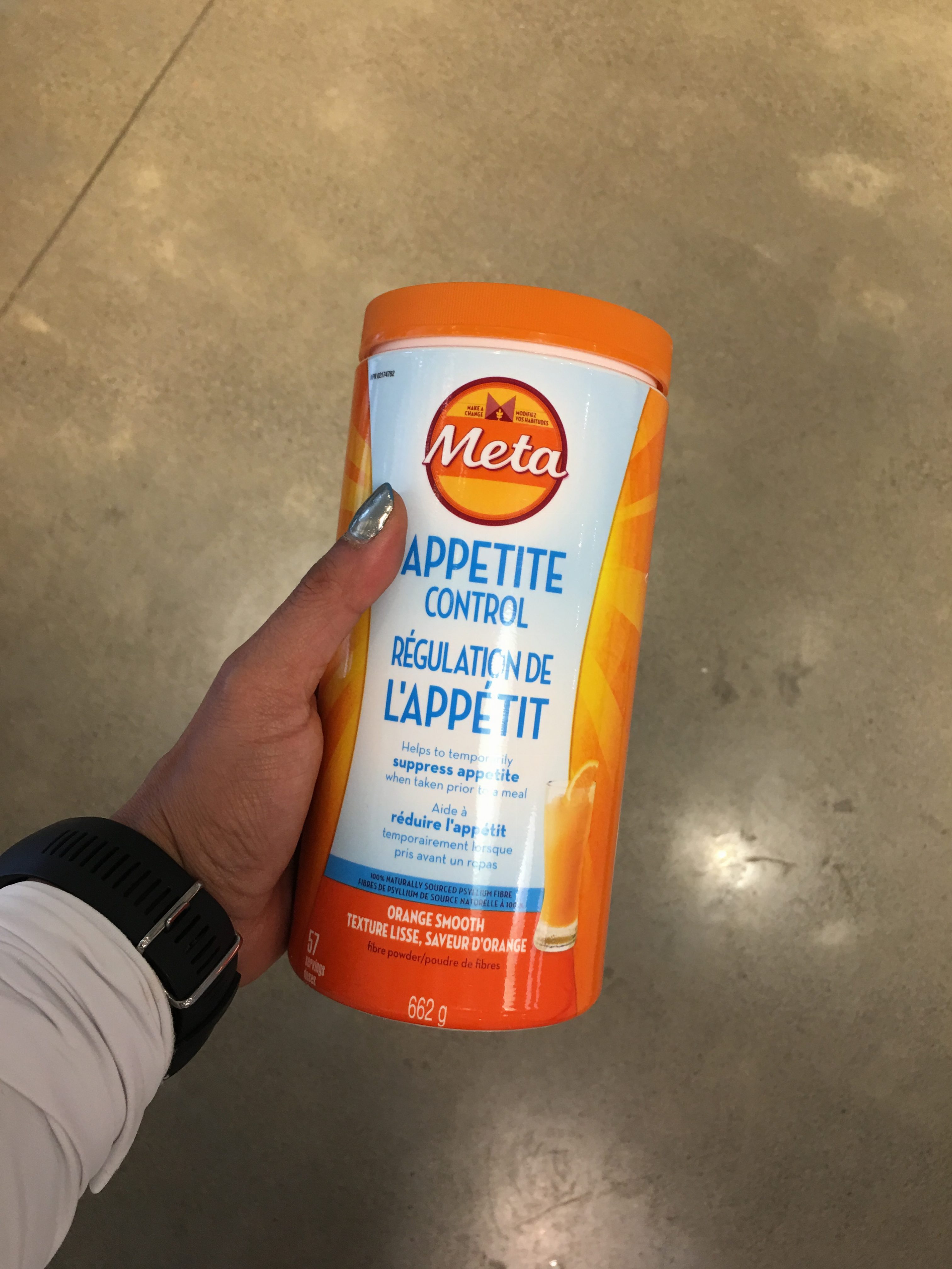
This week I was invited to a new product launch. The product was for Meta http://www.metawellness.com/ for their new appetite control product. The session was very informative, well set up and interactive.
After a Meta Wellness nutrition specialist (who was very friendly and informative) helped us learn what type of snacker we were we had the opportunity to try the product in an interactive way. We got to make a smoothie with it. Firstly I have been using meta for quite some time in my prep diets for both myself and my clients to get the proper amounts of daily fibre that they need. I have never thought to make it into a smoothie.
There was a cute laid out counter with ingredients and a recipe to follow but they also gave us the option to free style it. Which I chose because Im not allowed any fruit since I am prepping. I put water, ice, spinach and meta. Since meta is orange flavour it was honestly so delicious! I am going to start adding the recipe into my client programs because it was very satisfying.
Orange Zest Meta Appetite Control is a tasty fiber powder you can add to cold drinks up to 3 times a day with meals.
Orange Smooth Meta Appetite Control is a tasty fiber powder you can add to cold drinks up to 3 times a day with meals.* It’s also available in a delicious Pink Lemonade Quench flavor and an Unflavored Smoothie Enhancer that’s easy to mix into your smoothies—and your daily routine as an appetite suppressant. I can’t wait for these two new flavours to launch in Canada! It is also free of sugar and gluten, Meta Appetite Control is not only healthy—it’s a treat for your taste buds.
is not only healthy—it’s a treat for your taste buds.
Meta Appetite Control has been proven to help you feel less hungry between meals.* Its main ingredient is the super fiber psyllium fiber. It’s a natural fiber that forms a gel in your digestive system, slowing absorption and digestion, which aids in the sensation of fullness and acts as an appetite suppressant.
They gave us a cute little gift bag with the product and our own personal blender! Thanks so much Meta! http://www.metawellness.com
I give this product a 10/10 for the simple fact its a great way to supplement your fibre, curb cravings and it tastes delicious!
Hey Guys!
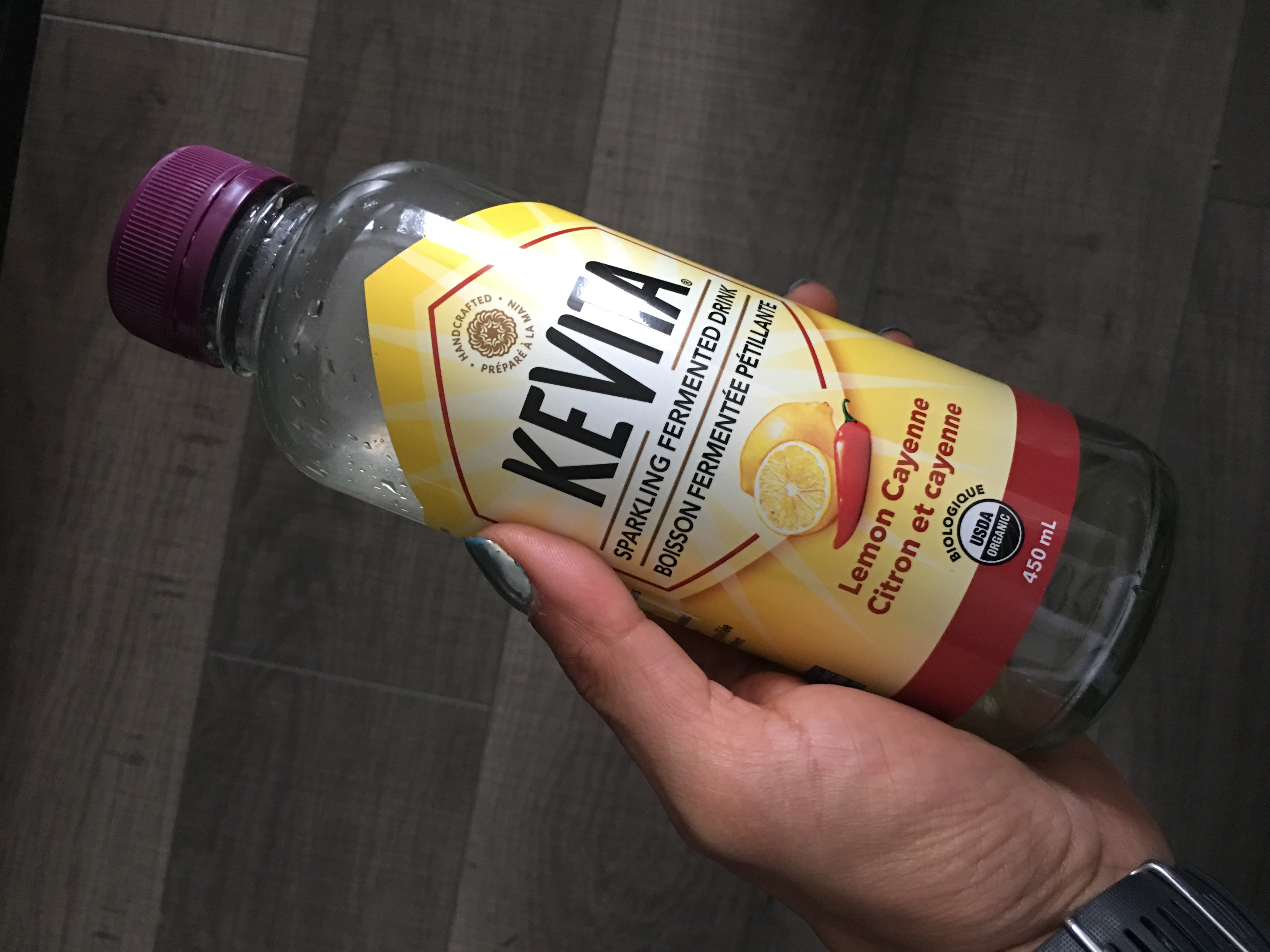
I was at my local health food store browsing the cooler. Since Im currently on prep and sweetners haven't been cut yet I tend to look for sugar free, low carb drinks to satisfy cravings. I happened to see a new bottle that I didn't recognize. It was called Kevita. This is a sparkling fermented drink. There were a few kinds so I checked out the back labels. I found one: Lemon Cayenne. That sparked my interest.
The drink is certified organic, 10 calories, 20mg sodium 1g sugar and 1g cab (not significant). So I decided to keep reading the ingredient list. What I thought was very interesting is that it contained apple cider vinegar, cayenne from the whole plant extract, lemon extract, stevia leaf extract and then fermented lactic acid. I was intrigued. It all had bacterial cultures. These aid in digestion along with apple cider. It was also gluten free, non -dairy and vegan. And to top it off its lightly carbonated to satisfy the bubble desire since I can't have real soda.
All in all I would give this product a 9/10. This is because it does have maple extract which is what I would presume the 1g carb, 1g sugar comes from. So Kevita if you feel like sending me a case of these for the rest of my prep I wouldn't be mad!
Physician leadership needed to transform health care
CSPL white paper calls for changes to increase physician involvement
Effective reform of the Canadian health care system cannot occur without the involvement and leadership of physicians.
That's the main conclusion of "Accepting our responsibility: a blueprint for physician leadership in transforming Canada's health care system", a white paper prepared by the Canadian Society of Physician Leaders (CSPL).
The document outlines actions that must be undertaken by individual physicians, the medical profession as a whole, health care organizations, and governments to bolster the role of physicians as leaders to help change the system.
"The current framework for creating and supporting physician leaders in Canada today is disorganized, episodic, and limited in scope," said CSPL past-president and study co-author, Dr. Johny Van Aerde.
"While there are examples of physicians being meaningfully involved in helping shape health care transformation and innovation in Canada, these examples are limited," said Dr. Van Aerde, who is also clinical professor of pediatrics at the universities of British Columbia and Alberta.
Findings in the paper are based in part on the first-ever survey of physician leaders in Canada conducted by the CSPL, in partnership with the Canadian Medical Association (CMA) and the Centre for Health Innovation at the University of Manitoba.
Among the findings from the survey of 689 physician leaders:
- Many physicians take on a leadership role with no compensation or only a minimal stipend
- Only 54% of physicians in formal leadership roles are compensated for pursuing leadership training or education
- Only 39% said they were involved in innovative projects in their organization
"Organizational policies often exclude physicians from meaningful leadership roles, but the culture of medicine must change to acknowledge the responsibility of physicians to the system as a whole," said Dr. Van Aerde.
The white paper contains a number of recommendations to enhance physician leadership and improve physician participation in health care reforms, including the following:
What physicians should do
- Explore and challenge their personal mental models and the world views that restrict them from engaging in the health care system and realizing their potential as leaders.
- Be willing personally to participate in and champion efforts by colleagues to understand the reform agenda within their provincial health care system and the implications for their own area of responsibility.
- Take steps to negotiate appropriate working conditions for physicians in a reformed health care system.
What health care service organizations should do
- Make changes in organizational structure and design, jointly advocated by the organization and physician representatives, to alter policies and practices toward involving physicians in informal and formal leadership roles.
- Use informal and formal communications approaches to ensure that physicians are aware of organizational issues and priorities and are able to respond and provide feedback on such issues.
What provinces and medical associations should do
- Initiate negotiations to formalize and support regional and organizational efforts to realize effective physician leadership and engagement.
- Work with universities and health research agencies, both provincially and nationally, to identify best practices; either conduct or gather research on the impact of various models of physician leadership and engagement; and share that knowledge widely with potential partners.
- Provide financial support for physician leadership development and remuneration for physicians in leadership roles.
What Canada should do
- The Government of Canada and Health Canada are encouraged to endorse the recommendations of the Advisory Panel on Healthcare Innovation and, in the spirit of human resource development, instill in the national innovation hub strong support for physician leadership development and engagement.
- The Canadian Medical Association should develop a policy statement that recognizes the importance of physician leadership in health care reform and, through its subsidiary, Joule, reform and expand its existing efforts to increase physician leadership.
- The Royal College of Physicians and Surgeons of Canada, the College of Family Physicians of Canada, provincial colleges, and medical schools across the country should expand their efforts to embed leadership development in formal medical education and professional development.
"This paper is the first step toward improved physician engagement and leadership in the Canadian health care system," said Dr. Becky Temple, president-elect of the CSPL. "We are asking all stakeholders to initiate a dialogue and take action to support physician engagement and leadership in the context of their own organization or setting."
"The thoughtful and encompassing white paper from the Canadian Society of Physician Leaders is a valuable document, showing the way to the overdue health care reform urgently required in Canada. The paper acknowledges the essential leadership of physicians in health system design and management at all levels, while also focusing on the required collaborative approach to system improvement. Only by working in partnership with all stakeholders in the health care system may we expect to develop sustainable and high quality care," said Canadian Medical Association president Dr. Granger Avery.
"The document acknowledges the important step taken by the Royal College of Physicians and Surgeons of Canada in changing its basic framework for medical education (CanMEDS 2015) to acknowledge the role of physician as 'leader'," said Dr. Andrew Padmos, president and CEO of the Royal College. "We agree with the CSPL that every physician is a leader and leaders can and should be found at all levels."
"Family physicians can be leaders, both in their local communities and at the national level," said Dr. Francine Lemire, executive director and CEO of the College of Family Physicians of Canada. "This white paper provides the rationale for all family physicians to consider taking leadership roles."
About the Canadian Society of Physician Leaders (CSPL)
The Canadian Society of Physicians Leaders is the "go to" organization for physician leaders. Since 1998, it has been providing support and development opportunities for Canadian physicians to help them succeed in their leadership and management roles in health care. The CSPL, with Joule (a CMA company), hosts the only annual meeting in Canada dedicated specifically to physician leadership.
SOURCE Canadian Society of Physician Leaders













